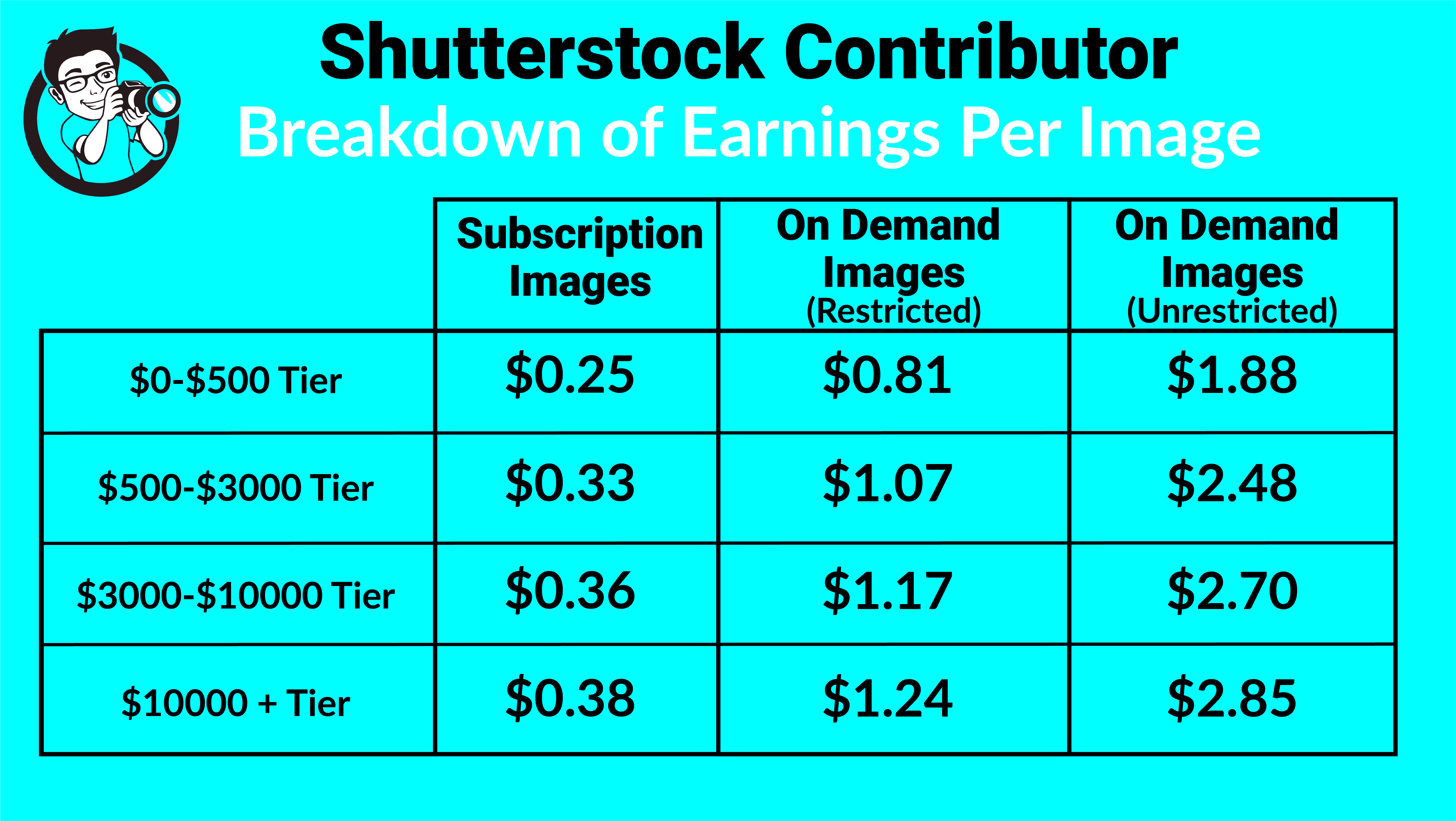Shutterstock is among the biggest virtual marketplaces that allow users purchase and sell stock pictures. It acts as a bridge between visual artists and enterprises, advertisers or producers requiring images for different ventures. With its vast network of users from all corners of the globe, Shutterstock gives opportunities to amateur photographers to display what they can do and make some cash off it too. So, what’s the trick? Let’s take a closer look!
The moment you upload any photos in Shutterstock they get into a huge storage of themany images for buyers to go through while looking for particular pictures. If someone happens upon one that pleases them, they are at liberty to buy the right to use it. On the other hand as far as the photographer is concerned he/she gets certain amount from the transaction. It is worth noting that by uploading more quality photos chances of making sales increase significantly.
Exploring the Benefits of Selling Photos on Shutterstock

There are numerous benefits to selling photographs on Shutterstock:
- Global Reach: Your work can be seen by potential buyers from around the world, increasing your chances of making sales.
- Passive Income: Once your photos are uploaded, they can continue to earn money for you without extra effort.
- Exposure: Being on a well-known platform gives your photography more visibility and can attract clients.
- Diverse Market: Shutterstock caters to various industries, meaning different types of images can find their niche.
Apart from these, there are such platforms like Shutterstock that provide useful tools and resources to photographers. You can keep track of sales, know the trendy images and learn how to make your portfolio better.
Also Read This: The Art of Portrait Photography: Techniques and Tips
How Photographers Can Maximize Their Earnings

Earnings optimization from Shutterstock is a process that requires time and strategy. Below are some effective ways to earn more money:
- Quality Over Quantity: Focus on producing high-quality images rather than uploading a large number of lower-quality photos. Great photos sell better.
- Research Trends: Keep an eye on market trends to understand what types of images are in demand. Use tools like Google Trends or Shutterstock's own insights.
- Optimize Keywords: Use relevant keywords in your image titles and descriptions. This helps buyers find your photos more easily.
- Build a Diverse Portfolio: Include a variety of subjects in your portfolio. This increases your chances of attracting different buyers.
- Engage with the Community: Participate in Shutterstock forums and discussions. Networking can lead to collaboration and increased visibility.
Hence it is through these strategies that photographers would be able to enhance their sales and establish a successful identity in Shutterstock.
Also Read This: How to View Someone's LinkedIn Profile Without Them Knowing
Tips for Creating High-Quality Images for Shutterstock
In order to achieve success on Shutterstock it’s really important to create high quality images. Among the many contributors, being noticed demands expertise and precision. Some applicable tricks which would aid you in enhancing image quality and boosting your likelihood of sales will be discussed.
The best investment you can make is a quality camera. Although smartphone cameras deliver fair photographs, usually DSLR or mirrorless cameras offer better control of settings and image quality. In addition, take into account:
- Lighting: Natural light is your best friend. Shoot during the golden hours—early morning or late afternoon—when the light is soft and warm. If shooting indoors, use softboxes or reflectors to achieve a balanced look.
- Composition: Follow the rule of thirds and pay attention to framing. Experiment with different angles and perspectives to find the most appealing shot.
- Post-Processing: Use editing software like Adobe Lightroom or Photoshop to enhance your images. Adjust exposure, contrast, and color balance, but don’t overdo it—keep it natural.
- Focus on Details: Make sure your images are sharp and free from distractions. Pay attention to backgrounds and props, ensuring they complement your subject.
Finally, remember to upload various pictures. Diverse choices are appreciated by buyers; thus play around with various styles and subjects for a balanced collection.
Also Read This: Organize Your Goals with Canva Wishlist Template
Analyzing the Market Trends for Photography on Shutterstock
Grasping the tendencies of the market remains inarguably important for photographers who aspire to thrive on Shutterstock. By being up-to-date with what customers require, you can customize your collection to fit their preferences. Thus, we will scrutinize the manner in which these patterns can be studied effectively.
At first, you should investigate widely recognized types of photographs that can be found on Shutterstock. You may accomplish this through looking over the website or making use of programs such as Google Trends. Below are certain fields that require concentration:
- Seasonal Trends: Certain themes are more popular during specific times of the year. For instance, images related to holidays, back-to-school, or summer activities can see spikes in demand.
- Emerging Themes: Keep an eye on new trends in photography, such as sustainability, remote work, or wellness. Being an early contributor to these themes can give you a competitive edge.
- Style Preferences: Buyers often gravitate towards specific styles, such as minimalism or vibrant colors. Pay attention to which styles are trending in your niche.
Alongside this, it is advisable to assess how well your own pictures perform. Make a note of the most selling photos and attempt to reproduce that in subsequent shots. By doing so and in tandem with understanding the market patterns you will be able to improve on your visibility as well as sales possibilities through shutter stock.
Also Read This: Boosting Your Earnings from Selling on Shutterstock
Strategies for Promoting Your Shutterstock Portfolio
For winning acceptance and sales, the promotion of your Shutterstock portfolio is essential. Yet, it is as imperative to ensure that potential buyers can see them. The following are some approaches to promote your work effectively.
Using Social Networks as Your Primary Tool.
Read the following hints:
- Share Your Work: Post your images on platforms like Instagram, Pinterest, and Facebook. Use relevant hashtags to reach a wider audience.
- Engage with Followers: Respond to comments and engage with your audience. Building a community can lead to more shares and exposure.
Next, think about making a personal website or blog. A portfolio with your finest work may be displayed on it while it also has precious photography-related information. Other options include:
- Email Marketing: Build a mailing list and send regular updates about new images, tips, or promotions to your subscribers.
- Collaborate with Others: Partner with other photographers or influencers. Collaborations can introduce your work to new audiences.
In conclusion, don’t look down up on the ability of networking. To meet fellow artists and other people in industries, attend photo shows, workshops or webinars. Actively marketing your Shutterstock portfolio can increase the chances of getting more buyers, thereby increasing your sales.
Also Read This: How to Keep Your Behance Links Active and Manage Project Connections
Common Challenges Photographers Face on Shutterstock
It’s not about just photographers offering their photographs at Shutterstock; rather it is much more than what meets the eye. Knowledge of this can aid in efficient movement within this realm. Let’s explore some shared problems confronted by photographers.
Initially, the contest is really heated. To get recognized among thousands of contributors might not be easy. Therefore, some problems that usually happen include:
- High Competition: Many photographers are uploading similar images, making it harder for your work to stand out.
- Rejection of Submissions: Shutterstock has strict quality guidelines. It can be frustrating when your images get rejected for technical reasons or because they don't meet the platform’s standards.
- Changing Trends: The demand for certain styles and subjects can shift quickly. Keeping up with these trends requires constant research and adaptability.
- Pacing Yourself: Building a successful portfolio takes time. New photographers may feel discouraged by slow sales in the beginning.
One of the problems is making sense of the payment system. Shutterstock has different earning categories that depend on your sales growth, which can make it hard to understand. This confusion often leads to photographers’ questions on how they can earn more money making them frustrated.
If one is informed about these difficulties and makes arrangements for them, then it would be possible to come up with plans that are going to help mitigate hindrances hence flourishing on the site.
Also Read This: How to Contribute Photos to Getty Images
Frequently Asked Questions About Profits on Shutterstock
For many photographers, making money from Shutterstock is a matter of great concern. Below are some of the frequent inquiries that will make the whole process clearer.
How much can I earn on Shutterstock? Earnings vary greatly depending on several factors, including the number of images in your portfolio, their quality, and how well they sell. Some photographers make a few extra dollars, while others earn a full-time income.
What is the payment structure? Shutterstock pays contributors based on a tiered system. As you sell more images, your percentage per sale increases. Initially, you might earn around 15% per sale, but this can rise to 40% as you reach higher sales volumes.
How long does it take to get paid? Payments are typically processed monthly. Once your earnings reach a certain threshold (usually $35), you can withdraw your funds via PayPal or bank transfer.
Can I submit the same images to other platforms? Yes, you can! However, make sure to read the licensing agreements, as some platforms may have exclusivity clauses.
How do I handle rejected submissions? Review the feedback provided by Shutterstock. Improving your images based on their guidelines will increase your chances of approval in the future.
For photographers to have clearer navigation through the world of Shutterstock and improve their making money techniques, it is necessary that they address these FAQs.
Conclusion on Maximizing Profits for Photographers
To wrap it up, it needs some creativity, strategy and the willingness not to give up so as to maximize one’s profits on Shutterstock. Although this platform presents great ways for photographers to exploit their works, there are challenges that have to be understood in order for one to succeed in using it well.
Concentrate first on the best pictures that respond to contemporary patterns in the marketplace. To maintain a following, you should revise your portfolio frequently and communicate with people through social media. Furthermore, be enthusiastic when it comes to learning from criticism and adjusting to what is new in stock photography.
Keep in mind that being patient and devoted is crucial. Shutterstock success does not occur immediately. Thus, if you take note of the recommendations and approaches mentioned in this blog, you can improve your visibility, elevate your sales, and eventually increase your income as a photographer.
The truth is that with complete commitment and diligence, a lot can be made on Shutterstock. So stay patient, continue to work on your skills and see how your photography empire rises!
